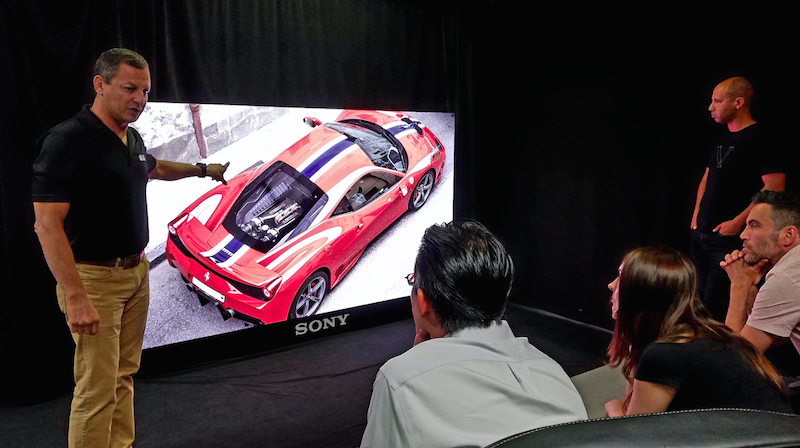

Narrowing down the list of potential advanced visualization integration partners for your organization's next project can be taxing. Some AV companies simply want to begin and complete an integration, and move on to the next project. On the other hand, some integrators have extensive experience and understanding of the unique needs of different industries and clients.
Pat Hernandez, the founder and president of IGI, knows advanced visualization better than almost anyone else in the industry. Hernandez and IGI have led the way in advanced visualization for 20 years. We sat down with Hernandez to learn more about why an Advanced Visualization Systems Engineer is critical to the integration process and how they help organizations meet their AV goals.
An advanced visualization engineer is very different than a general AV engineer. An advanced visualization engineer is constantly learning and, quite literally, doing research and development to learn new ways of building visualization systems.
Engineers must conduct a tremendous amount of research on the industries they’re helping. For the automotive industry, for example, they need to understand the entire automotive design process.
That’s critical, because when they start talking about advanced visualization, they should understand how to fit the technology into the client’s requirements. If they understand how different clients do their work, engineers can educate clients on how the technology fits into their process.
To do this, engineers research “bleeding-edge” technology. They might not sell it, but they need to understand what’s coming down the pike, so when that technology becomes reliable enough, they can educate customers about that technology.
In the world of hardware, we use digital signals to connect everything together. Think of a digital signal like water in a garden hose: if you take a garden hose and you want to fill a pool, it’s going take a long time to fill that pool. To fill it more quickly, you have to think of a new way of transferring water. Today, we have a garden hose but tomorrow we need a fire hose to fill that pool. Instead of taking two days to fill that pool, we can fill it in a day.
But that’s still not enough. So instead of the fire hose, we use a fire hydrant so we can transfer more water, more quickly. That’s how technology works. The pool is a requirement, the hose is the connectivity and the hydrant is the hardware.
The desire for more technology is always there. Customers want to consume more data. Think about computers and how we used to look at web pages, and now we’re watching movies wirelessly. That’s the need.
Hardware manufacturers are constantly playing a game to keep up. Think about how every two or three years you need to buy a new computer, but after a year it’s not as fast as it was when you first bought it. Because you want more, you end up buying a new computer.
It’s the same scenario with advanced visualization. We’re constantly playing this game to keep up with demand.
We spend a tremendous amount of time testing and researching, because hardware often doesn’t work the way it’s designed. With costly advanced visualization projects, if something doesn’t work the way it’s designed, there’s a lot at stake for the customer and the integrator. For example, a design process for a PowerWall could take up to 100 hours. If the technology does not operate properly, the result is valuable time lost for engineers and for customers.
Other than learning about the technology, an important way System Engineers help organizations reach visualization goals is through education. Automotive engineers, scientists and military personnel usually don’t have an understanding of how all of the pieces go together. They ultimately care about viewing their content with the fastest performance and highest resolution. At the end of the day, they just want it to work. That’s why it’s so important for System Engineers to work with customers to educate them on how these advanced systems operate.
IGI is an industry leader in the complete integration of ultra-high resolution Advanced Visualization systems, including PowerWalls, CAVEs and Virtual Reality. We boast nearly 20 years’ experience in the advanced visualization industry managing all levels of AV integration projects. Contact us to learn more about how your company can realize the operational value of advanced visualization for your audiovisual display needs. Or, see our case studies below.